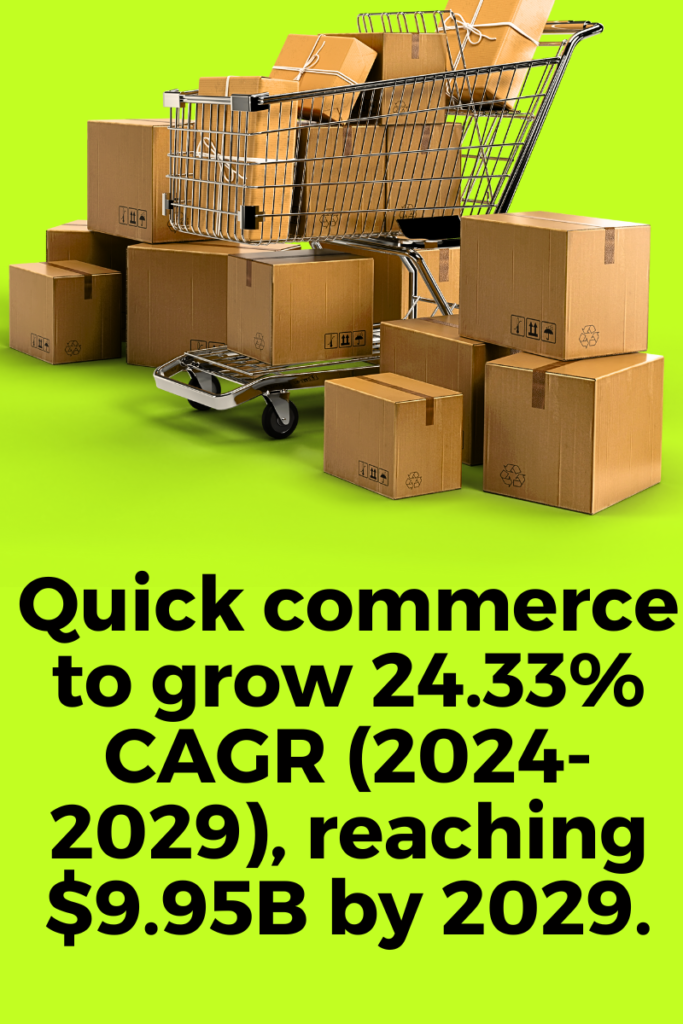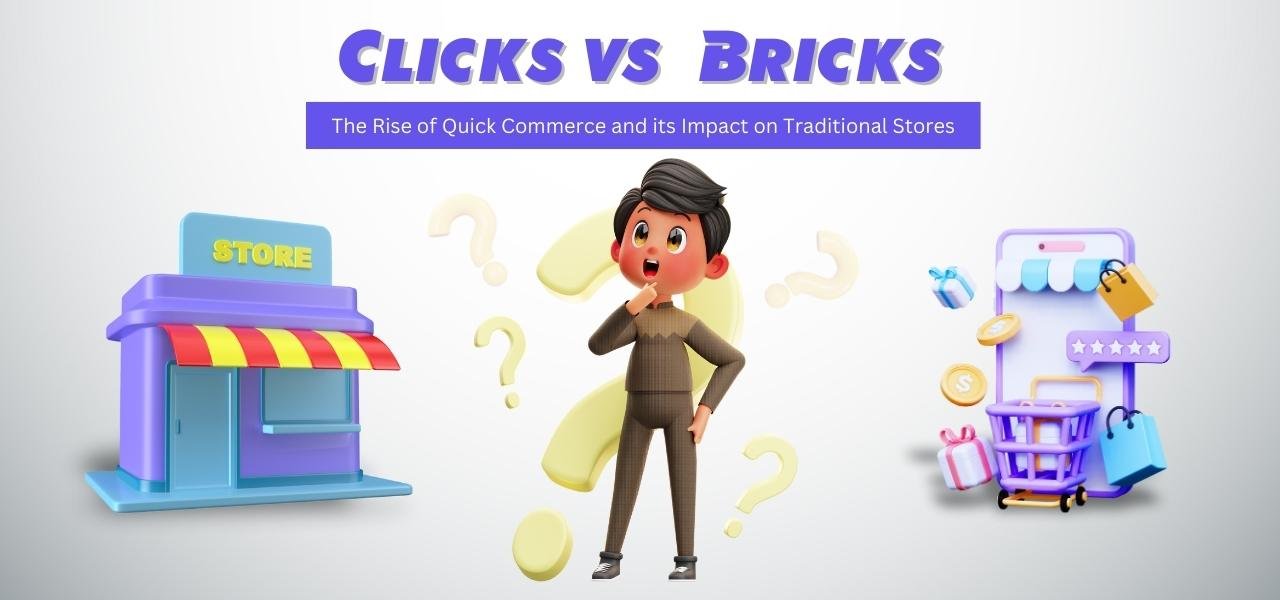All over the world, traditional retail stores are falling as quick commerce is on the rapid rise.
Long-established stores are facing immense competition because of the lightning-fast deliveries by the quick commerce model.
So, what is quick commerce? It’s majorly known as on-demand delivery or you can say e-commerce but fast (like superfast). It’s the same as ecommerce where you get your items by clicking certain buttons on your phone. But the major difference is the time it takes. Quick commerce delivers in hours and some platforms are doing it in minutes. Now that we have advanced technology and huge manpower.
India is witnessing expeditious growth in quick commerce and it’s revolutionizing the way we shop.
Quick Commerce and its Impact

Quick commerce, or can be called “q-commerce,” is a modern model of retail where the most important considerations are speed and convenience. With quick commerce, customers can get groceries, food, sanitation, and even clothes delivered to their desired location. Buying products through quick commerce hardly takes a few hours or even minutes. And that’s the reason this model has gained significant traction.
Particularly in the cities where people have no time but have that extra money to pay for instant delivery.
Also Read – E-commerce vs. Quick Commerce | Work Life Balance
The Impact of Quick Commerce on Traditional Retail
Quick commerce has intense implications for traditional retail stores. Let’s see how:
Increased Competition: With quick commerce entering the picture swiftly, traditional retailers face competition. Because of these advanced technology-driven companies that offer more and faster.
Changing Consumer Expectations: Earlier, customers either stocked up their goods or got out to buy their essentials. But now consumers have become accustomed to fast delivery at their doorsteps. Making shopping experiences more convenient and raising the bar for traditional retailers.
Supply Chain Challenges: Quick commerce needs robust supply chain management as they need to ensure timely and accurate deliveries.
Digital Transformation: The world is transforming digitally in every aspect. To cope with the industry trends, traditional retailers must adapt digital technologies to stand tall and effectively in the new retail landscape.
MBA Information – CAT Previous Year Papers | IIM Placements
The Rise of E-commerce
When E-commerce entered the market, it majorly disrupted the retail industry, and now quick commerce has taken over the market completely. With the use of technology and efficient logistics, e-commerce platforms like Amazon, Flipkart, and Myntra have successfully captured a significant market share in both urban and rural areas. So, in a nutshell, it can be said that quick commerce is not the contender but a partner of e-commerce. As it is taking e-commerce to the next level by contributing to faster delivery and a wider range of goods.
The Future of Retail
Quick commerce and retail commerce are evolving and it’s going to get bigger with time and most likely to reshape the future of retail around the world. Some key trends that one can see in the future of retail would be:
Hyperlocal Delivery: Traditional retail stores will mostly focus on offering products to specific neighborhoods and starting hyperlocal delivery services to grow their business.
AI and Machine Learning: Like every other industry, the retail sector will also integrate advanced technologies. That will be utilized to optimize inventory management, delivery routes, demand forecasting, and more.
Omnichannel Retail: We are already at the stage where retailers are opting for an omnichannel approach. This not only integrates online and offline channels but also provides seamless shopping experiences to the customers.
Sustainable Practices: The retail business is also going to see a super boom in sustainable practices. Consumers are now more aware than ever and increasingly demanding sustainable and ethical practices from their retailers.
Popular Read – Top 50 MBA Colleges in India | Best MBA Colleges in Jaipur
Conclusion of Clicks vs Bricks War
In short, quick commerce indeed has an impact on the traditional retail market as it is a powerful force that has the ability to transform the retail industry. This also remains the fact that with quick commerce arising, traditional retailers are going to see lots of challenges but if they see it as an opportunity, it offers innovation and growth for them as well. Traditional stores must also try to enter e-commerce and quick commerce to adapt to changing user preferences for their customer’ best experience and business’s long-term growth.
A: Quick commerce is also a retail model. It is all about speed and convenience. With quick commerce, customers get products delivered within minutes through platforms like Blinkit or Instamart.
A: With Quick commerce rising, traditional stores are facing competition. It also changes consumer expectations to get goods fast. To run quick commerce efficiently, one needs to have a robust supply chain, and traditional retailers have to adapt to digitization to remain in the picture.
A: No! It’s an extension of E-commerce. It prioritizes faster and more convenient delivery.
A: Key trends include hyperlocal delivery, AI and machine learning integration, omnichannel retail, and sustainable practices.
A: Yes! They can adapt by accepting e-commerce and quick commerce in their already-running business. Opting for digital technologies, and offering hyperlocal delivery services are some ways for them to remain competitive.





